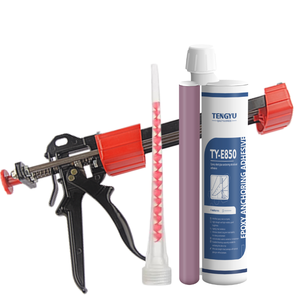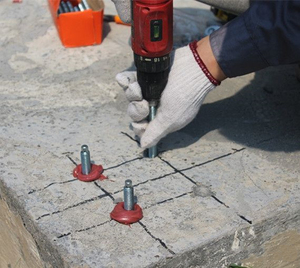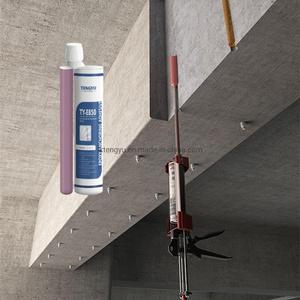
All categories
Featured selections
Trade Assurance
Buyer Central
Help Center
Get the app
Become a supplier

(1995 products available)












































An anchor track is a type of hardware used to create a secure anchor point for various applications, such as tie-down systems, cargo control, and boating. There are different types of anchor tracks, each designed for specific purposes. Here are some of the most common ones:
Material
The anchor track is made of high-strength steel, which has good strength and resistance to longitudinal force. The steel used in the anchor track is usually hot-rolled steel, which is strong and durable. In addition, some anchor tracks are made of alloy steel, which has higher strength and wear resistance.
Dimensions
The anchor track is divided into different specifications according to the ship type and size. The width of the anchor track is generally between 100-300mm, and the thickness is 15-30mm. The length of the anchor track is usually 6-12m, which can be spliced according to the actual needs of the ship.
Connection Method
The anchor track is connected to the ship's hull through welding, bolts, or a combination of two methods. The connection needs to be firm and reliable to withstand the anchor's pulling force. In addition, the connection between the anchor track and other parts (such as the anchor well) also needs to be taken into account to ensure that the whole system runs smoothly.
Surface Treatment
The anchor track requires surface treatment to prevent corrosion and extend service life. Common surface treatment methods include galvanizing (hot-dip galvanizing or electro-galvanizing), coating (such as epoxy resin coating), and corrosion-resistant paint. These treatments can improve the anchor track's durability and reliability.
Load Capacity
The anchor track's load capacity should be designed to withstand the anchor's drawing force and the ship's operational safety. Different types of ships have different anchor tracks and load capacity standards. Generally, the load capacity of anchor tracks is between 50-200 tons, and the specific value needs to be determined according to the ship's size and type.
Check the anchor tracks regularly for wear, cracks, and corrosion and take timely measures to repair them. The connection parts should also be checked and tightened if loose. Clean the anchor tracks regularly to remove dirt, rust, and marine organisms, and protect them with corrosion-resistant coatings. When the anchor track is found to be worn or damaged, it should be replaced in time to ensure the safety and reliability of the anchor system. Anchor tracks need to be replaced regularly according to the manufacturer's recommendations and the ship's operating conditions. Generally, anchor tracks have a service life of 10-20 years, but the specific time may vary depending on factors such as maintenance, environment, and use mode.
Choosing the right anchor track for one's needs can seem challenging, but by understanding the important factors to consider, it can be a straightforward process. The type of track to choose depends on the kind of applications one prefers to use it for. Various options are available, including curved, heavy-duty, and adjustable tracks that offer different benefits. One can select an anchor track that will provide the most suitable solution for their needs.
Consider the size and weight of the cargo to be secured. Larger and heavier loads may require more robust tracks and fittings, such as heavy-duty anchor tracks, to ensure safety and stability during transport. On the other hand, lighter loads can be secured with standard anchor tracks.
Evaluate the installation options available for different anchor tracks. Some may require more complex installations than others or professional installations. Choosing an anchor track that can be easily installed or that suits the preferred installation method is essential.
Consider the material of the anchor track. Each material has its advantages. For example, stainless steel offers excellent corrosion resistance, making it suitable for various environments, while aluminum is lightweight and rust-resistant but may not be as durable as stainless steel in harsh conditions.
Different anchor tracks have distinct features, such as adjustable options that allow customization of load positioning and heavy-duty tracks designed for extreme conditions. Choose an anchor track with features that suit specific preferences and needs.
Finally, consider the budget. Anchor tracks come in a variety that fits different budgets. It's important to choose an anchor track that offers the most value within the budget, considering the features and benefits rather than the price.
Replacing an anchor track can be a simple DIY project. Here are some easy steps to follow when replacing an anchor track:
Choose the Right Track
When installing a new anchor track for a client, ensure that the track selected is appropriate for the type of boat and the anchoring system used. The material should be corrosion resistant. For example, if the old track was made of stainless steel, make sure the new one is also made of stainless steel.
Prepare the Area
Clean the surface where the anchor track will be installed. Debris and dirt should be cleared to ensure proper adhesion or fastening.
Positioning the New Track
Place the new anchor track in the desired position. It should be aligned with the previous track's location. The track should be positioned to allow for smooth operation of the anchors.
Marking the Holes
Use a marker or pencil to mark the holes for screws or bolts. This will ensure accurate placement during installation.
Drilling
Drill holes in the surface of the boat where the anchor track will be installed. The holes should be slightly larger than the screws or bolts to allow for movement.
Applying Sealant
Before attaching the new track, apply a marine-grade sealant around the holes. This will help prevent leaks and protect the integrity of the boat's structure.
Attach the New Track
Using screws or bolts, attach the new anchor track to the boat. Make sure it is securely fastened to prevent movement or damage.
Test Operation
Once the new track is installed, test the operation of the anchoring system to ensure everything is working smoothly. Make any necessary adjustments if needed.
Final Inspection
After the installation is complete, do a final inspection to ensure the anchor track is properly aligned and securely attached. Check for any signs of wear or damage.
Q1: What Is An Anchor Track?
A1: An anchor track is a system used in various applications, such as boating, fishing, and cargo management, to provide reliable anchoring solutions. It consists of a track or rail installed on a surface, such as a boat deck or truck bed, along with movable or fixed anchor points or fittings that can be used to attach ropes, straps, or other anchoring devices.
Q2: What Is A Track Anchor Used For?
A2: A track anchor is used for anchoring and securing purposes in various contexts, such as marine environments, off-road recovery, and cargo management. Track anchors provide a versatile and adjustable anchoring solution, allowing users to customize their setup according to their needs.
Q3: What Is 8020 Anchor Track?
A3: 8020 anchor track refers to a specific type of anchor track system based on the 80/20 principle, which means "80 percent of the results come from 20 percent of the effort." In the context of anchor track, it signifies an efficient and optimized design that delivers effective anchoring solutions with minimal installation effort and maintenance.